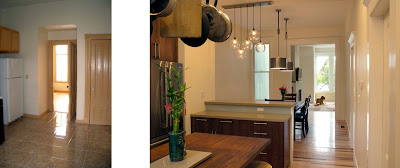Ah, Starship. At least they had it half right. After a long hiatus, I thought I would post some tips about beginning a garage addition or doing anything to a garage that requires some digging. (Hmm, suspicious!)
You want to find out three things: How deep is your foundation? If you have an adjacent building, how deep is your neighbor’s foundation/footing? What’s the soil condition like? These are simple questions, but their answers could have a significant impact on the cost of your project and the length of time it could take to complete it.
It’s advisable to investigate your soil quality early, like, as soon as you start to seriously consider a garage addition. If your plans include digging several feet below the existing level along a property line, you should contact a soils engineer to obtain professional soil testing. However, if you’re aiming to gain a foot or two of head height, or are interested in an area that is far from the property line, then you should simply dig a test hole, or ask your contractor to do it. If you plan to excavate along the property line, dig this hole along the inside of the exterior wall. Break up a small area of concrete if necessary. Then dig outward toward your foundation and find the bottom of it. In garages that have areas with exposed crawl spaces, this exercise is even easier. Go into the crawl space and dig a hole, preferably a couple feet deep.
Here are a few potential scenarios and how they might affect your project:
1) Let’s say you would like to drop a stair from your main living space down to the garage level to add a rec room or a master suite. When you go to dig a hole in the crawl space, you find that digging is not so easy and you keep hitting large rocks. This discovery is not a huge deal, but it’s important that to relay the information to any contractor bidding your job. This simple step will ensure that potential contractors will check out the labor involved and bid the excavation work correctly.
Unanticipated, difficult excavation can quickly eat up any contingency fees that a contractor works into his or her bid. (Be sure that there IS a contingency fee included in the first place!) In the worse case scenario, a contractor could respond to this issue by shortchanging other areas of the project to compensate for the time and manpower that had to be allotted to the foundation work. An early awareness of excavation difficulty can help avoid an issue that could easily snowball into other problems.
2) This time you want dig down about a foot to give the proper ceiling height to new rooms. Let’s say there are buildings on both sides of your home. You dig a hole through your concrete slab and find that your foundation extends about six inches below your existing slab. This tells you that you’ll need to replace the foundation in the areas where you plan to lower the floor. The soil is not soil at all, but rather sand, so you can scoop enough out to find out your neighbor’s footing is the same depth as yours. This discovery is significant for a number of reasons. In order to avoid undermining your neighbor’s foundation (and a resulting lawsuit), the process of excavation must be much slower and painstaking so that the neighbor’s footing is shored up every step of the way. This particular finding is troublesome due to the fact that sand is not easily shored. It requires a ‘grouting’ process that converts sand to sandstone, making it capable of holding up your neighbor’s home while you work on yours. All of this translates to more time and money, so again early discovery is key.
3) Lastly, an example involving soil and it’s trusty friend, water. Similar to above, you plan to dig down because you are just shy of the required head height for a rec room at the ground floor of your home. You’ve checked your foundation depth and it extends well below the depth of your desired new slab. The only thing is, after digging your hole, you notice that it’s quite damp and actually develops a small puddle overnight. The soil quality is a little bit like clay, but fairly stable. As it turns out, your back yard and neighboring properties generate a lot of runoff water that has never managed to permeate the existing slab. This discovery tells you that you’ll need a drain along the rear of your house to divert the water away from your new slab. There’s a chance that the new slab would hold up just as well as the last, but who wants to take a chance when it comes to water in your home?
If you’ve made it to the end of this blog entry about dirt, I commend you. I hope these examples are useful. We’ll get back to design in the next entry, and yes, pictures!


















